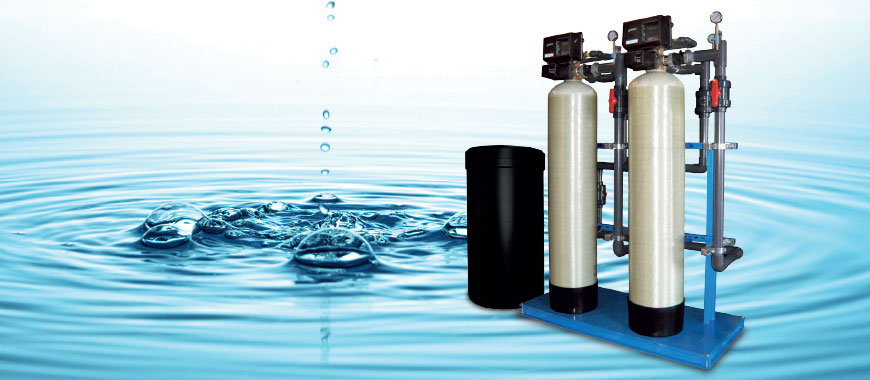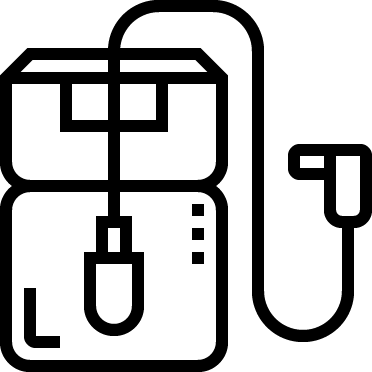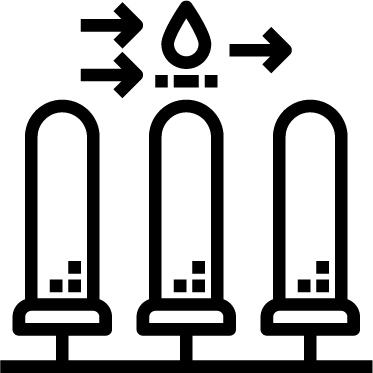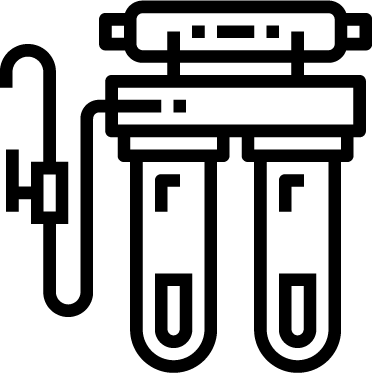
WATER SOFTENER PLANT IN BANGLADESH
Natural water may contain hardness that can be created by minerals of water. This is the most common problem faced by homeowners in Bangladesh. Though many of us don’t even understand this problem. Hard water is a common water quality problem that can collapse appliances and make skin and hair dry. But you can get a water softener plant in Bangladesh. Investing in a water softener can save you energy, time, and money. By using this plant you can get ‘Zero’ hardness in water.
What is a water softener plant?
A water softener can also be called a whole house filtration system which removes calcium, magnesium, minerals, and other hardness-causing components effectively. It uses a unique process called ion exchange. A water softener process noticed one of the most subversive and dominant water issues known as – water hardness. The hardness-causing components are taken up with the underground water supply while the water is heated at the premises, the minerals crystallize, glued to the household surfaces. The hard water –
- Can be built into the pipe. Then clog the pipe.
- It decreases the water supply.
- Shortens the lifespan of your home appliances. Such as soap washers, coffee makers, and others.
- The appliances of hot water can be vanished by hard water.
Have you ever heard the popcorn popping sound while heating water through your water heater? If you’re someone from hard water territory, it’s a common sound for you. It’s the calcium and magnesium transformed into solid deposits then start to crack and stretch. It makes that kind of sound. Sodium chloride which is a water softener can effectively replace water minerals. A water softener plant stocked with salt is a quite simple method. Besides, it’s easy to operate and maintain. CleanTech Engineering has bought a water softener plant in Bangladesh to provide comfort to homeowners with daily chores.
How does a water softener plant work?
Through a process known as ion exchange, the water softener plan eliminates calcium, magnesium, or other minerals from the water. It works simply but effectively. How a water softener plant in Bangladesh works is given below-
- After entering into the mineral tank, the water flows through a spherical bed covered with resin beads. These beads are plastic with polystyrene.
- Then the resin beads are charged with the sodium ions.
- The resin beads contain a negative charge where the calcium and magnesium contain a positive charge. Combined it makes their cations.
- As opposite charges attract. The positive charge of minerals becomes attracted by the negative charge of resin beads.
- By the time the hard water is processed through the resin beads, the beads gran the mineral ion ahold and eliminates them from the water.
- While the beads are removing the mineral ion, it releases sodium ion into the water.
- The column of resin effectively eliminates all the hardness out of water when it’s passing from the mineral tank.
- This way the softened water flows into your house and makes chores easier.
- What are the main components of a water softener plant in Bangladesh?
A control valve, a mineral tank, and a brine tank are the three main components of a water softener plant in Bangladesh. All of these three components work together to remove minerals from the water. Through a regeneration process, it works periodically to clean water.
Mineral tank: It’s the chamber where the hard water is going to be softened. The supply line of water feeds the water to the mineral tank. The bed made with resin beads catches calcium and magnesium that harden the water and deposits it. The mineral tank stores the soft water flow whenever you need to use it.
Control valve: The amount of water going to pass through the mineral tank into your premises is measured by the control valve. Here, the valve house has a meter that can track how much water is entering the mineral tank. While the hard water is flowing through the mineral tank, it exchanges the calcium and magnesium ions with the sodium ions. Eventually, the resin beds continuously soften the water. A regeneration cycle is automatically initiated by the control valve, at the time the resin bed is full of mineral components because of continuous support to remove calcium and magnesium ions. The maximum capacity is already pre-programmed into the onboard computer of the control valve. The program depends on a range of factors. Such as-
- The size of the valve’s house.
- The hardness of the water.
- The number of occupants.
You can call the control valve- the demand-initiated controller. It makes the softening unit extremely efficient.
Brine tank: In the regeneration process, the brine tank aids the water softening process. It’s a shorter tank that sits adjacent to the mineral tank. A highly concentrated solution of salt or potassium is grabbed by the brine tank (the shorter tank). This tank restores the resin beads’ positive charge. The salt needs to be added manually in the form of pallets or blocks into the brine tank. Then the salt dissolves itself into the water at the bottom of the tank. When the control valve is registering the softening capacity of the tank the resin beads diminish and the heavy brine solution comes out from the tank and flourishes itself through the resin beads of the mineral tank. What if the brine tank is out of salt? Then the hard water passing through the unit will not be softening.
What is the water regeneration cycle?
The regeneration cycle outpours the resin beads with highly concentrated brine solution which is salt or sometimes potassium. The regeneration process helps in washing off the hardness of the water. It also drains away from the hardness of the system. Because of the regeneration process, the resin beads become recharged to eliminate the calcium and magnesium ions from the water. Using two regeneration processes the water softener plant softens the water.
- Co-current regeneration cycle: It’s the process that uses more solutions to complete the regeneration process.
- Countercurrent regeneration cycle: it’s the process that uses less solution of salt to complete the regeneration process.
What are the features of the water softener plant?
User friendly: A water softener plant is quite user-friendly. After installing it, you can use it very easily.
Modern technology: The plant includes the modern technology you can expect from a water softener plant.
Automated or manual regeneration: While eliminating the hardness of water, the plant uses both automated and manual regeneration processes.
FRP Vessel/ MS Vessel usages: This water can be used to sterilize surgical instruments. Such as dressing, bedding, and rubber gloves.
Energy-efficient: It uses energy-efficient technology to remove hardness from the water.
Scales reduction: The scale of calcium and magnesium ions can be highly reduced through the plant.
Enhances service life: By using this one can increase the service life of coffee, detergent soap, ice maker, and more.
Lightweight and compact: The plant isn’t heavy at all. Besides, it won’t block so much space on your premises.
Effective clean harmful particles: Including calcium and magnesium, the plant can effectively cleanse all the minerals from the water.
Anticorrosive parts: The anti-corrosive parts of this plant helps to soften the water.
What are the benefits of a water softener plant?
A water softener plant can be beneficial for both industries’ produce – foods, beverages, medicine, and beauty products as well as homeowners who are facing plugins on their home appliances. Water that contains a great number of minerals can cause problems that we’ve already talked about. now let’s know the benefits of a water softener plant-
Reduce plumbing cost: The minerals of hard water travel through the pipe, it becomes stuck to it and builds a form that eventually clogs the pipe. Having a water softener plant won’t let it happen.
Cleaner appliances: The mineral scale that has been built due to hard water in your appliances like washing machines, dishwashers, and others. installing a water softener plant may eliminate such issues. It helps to increase the lifespan of coffee makers, water heaters, and others.
Minimize gas and electric bills: By eliminating the pipe damage, a water softener plant can help in reducing gas and electric bills. How does it prevent damage? When minerals build up the scales in the pipe, it blocks the passing space and makes it narrow. A water softener plant won’t let it happen.
Clean dish: Cleaning dishes with hard water may leave marks and leave a cloudy appearance. But a water softener can solve the problem from the root.
The application of water softener plant in Bangladesh
- Boiler feed.
- Cooling tower make-up.
- Air Conditionaing Plant
- Beverage production.
- Food production.
- Water power plants.
- Ice Plant.
- Pharmaceutical Industries.
- Product finishing.
- Household.
Conclusion
CleanTech Engineering has bought the water softening plant in Bangladesh. When the water is hard it clogs the pipes and makes the soap dissolve very easily. This isn’t really good for health and beauty. A water softener effectively removes ferrous iron from the water that leaves visible stains on your property. The water softening plant is very easy to use and reduces the hardness of the water.


 Industrial Water Plant
Industrial Water Plant








